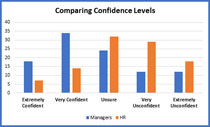 Diane Bogino is President of Performance Strategies, Inc., providing clarity, focus, and strategies for coaching clients, conducting in-depth analysis for teams and individual members, and developing and delivering customized training programs for real world business solutions. She is an in demand public speaker and the author of five books.
Diane Bogino is President of Performance Strategies, Inc., providing clarity, focus, and strategies for coaching clients, conducting in-depth analysis for teams and individual members, and developing and delivering customized training programs for real world business solutions. She is an in demand public speaker and the author of five books.
Diane has spoken for, coached, consulted, and provided training for:
the Centers for Disease Control (CDC), Coca-Cola, Emory University, United States Forestry Service, Sheraton Hotel, Elsevier, Renaissance Hotel, Israeli Consulate, Israeli Department of Defense, Penta Hotel, American Association Institute of Certified Public Accountants (AICPA), Pensacola State College, Opportunity Bank, American Association of Occupational Health Nurses (AAOHN), KH International, and many other organizations as well as individuals.
Diane is passionate about bringing tools, ideas, and strategies to help make your business and employees thrive. Through books, speeches, courses, and workshops, Dane is dedicated to helping you grow your capabilities and connections and getting you to that next level of success, no matter where you are in the process right now.
Affiliations and Certifications
- Masters in Industrial Organizational Psychology (I/O)
- Bachelor of Science in Psychology (BS)
- Registered Corporate Coach (RCC)
- Leaders Coaching Leaders Coach (LCL) and Facilitator
- Certified Professional Behavioral Analyst (CPBA) (DISC Certified)
- Certified Professional Driving Forces Analyst (CPDFA)
- Certified TriMetrix HD Analyst (CPHDA)
- Certified Professional Emotional Quotient Analyst (CPEQA)
- Certified Master Trainer and Instructional Designer/Developer
- National Speakers Association (National & Local) (Past President of Georgia Chapter)
- In a former life, Diane was an actress and model. She appeared in a movie and in numerous commercials and did a national spot for Delta airlines. She also did voice overs, print and runway modeling. At one time she was “Daffey Diane,” (some say she still is!), a magic clown. She also performed magic as herself winning Magician of the Year for Greater Atlanta.
Personal Note:Contact me today and let’s have a discussion of ideas on increasing success for you, your business, and your employees. Call 404-320-7834 or email This email address is being protected from spambots. You need JavaScript enabled to view it..
.
 They are dreaded, awkward, often biased, and described as a necessary evil. Indeed, many companies, such as Adobe, Deloitte, and GAP have stopped giving performance reviews. Is it working? According to a new study by CEB (now Gartner) maybe not. The study posits that performance went down in companies not using performance reviews. Brian Kropp with CEB suggests that there are not too many managers who can provide good reviews without some type of rating system. With apologies to cognitive psychologists out there, perhaps this is a cognitive function. In other words, from the managers point of view, how are we to rate someone at any level without something to rate them by? Then from the employee’s point of view, how do I really know where I stand without a scale to measure myself against? Except for the Picasso’s in the world, the human mind probably doesn’t think as well in the abstract. A good question to ask is, “Have the ratings really disappeared?”
They are dreaded, awkward, often biased, and described as a necessary evil. Indeed, many companies, such as Adobe, Deloitte, and GAP have stopped giving performance reviews. Is it working? According to a new study by CEB (now Gartner) maybe not. The study posits that performance went down in companies not using performance reviews. Brian Kropp with CEB suggests that there are not too many managers who can provide good reviews without some type of rating system. With apologies to cognitive psychologists out there, perhaps this is a cognitive function. In other words, from the managers point of view, how are we to rate someone at any level without something to rate them by? Then from the employee’s point of view, how do I really know where I stand without a scale to measure myself against? Except for the Picasso’s in the world, the human mind probably doesn’t think as well in the abstract. A good question to ask is, “Have the ratings really disappeared?”
 Complexity and how it affects productivity seems to be the new boogie man haunting organiztions. The reality is that research by Margaret Wheatly in 1994 and Olson and Eoyang in 2001 brought this Ghoul out of its closet. Needless to say, different factors from different business issues such as technology and the world economic and political stages have added their own unique twists to the complexity of doing business. One factor that has remained constant is people. Zimmerman (1998), as quoted in a study by Peter M. Dickens states, “In every interaction, people mutually adjust their behaviors in ways needed to cope with changing internal and external environmental demands.”
Complexity and how it affects productivity seems to be the new boogie man haunting organiztions. The reality is that research by Margaret Wheatly in 1994 and Olson and Eoyang in 2001 brought this Ghoul out of its closet. Needless to say, different factors from different business issues such as technology and the world economic and political stages have added their own unique twists to the complexity of doing business. One factor that has remained constant is people. Zimmerman (1998), as quoted in a study by Peter M. Dickens states, “In every interaction, people mutually adjust their behaviors in ways needed to cope with changing internal and external environmental demands.”
I don’t know so much about the “mutually” part, but yes, as humans we either adapt or die. That’s what we do. Unfortunately, not all of us have the capability of adapting to certain situations, or we don’t adapt as rapidly as some of our teammates, or we fail to see the reason to adapt. Others fail to anticipate a change is in the works and get broadsided by the change. Then there are those who simply don’t want to adapt. Ahhhh, I can see you are already reading between the lines…human behavior can add to the complexity of business.
Behavior at the individual level plays a major role in business complexity. The factor that adds to the complexity at the individual level is that many CEOs fail to see this blind spot, fail to understand it, and therefore, fail to manage it. Where does complexity on an individual level manifest? A case study by McKinsey and a “heat map” generated from their research, indicates both the intensity of complexity as well as ferreting out individual causes. Some of these are
 As a “recovering” Human Resources professional, working in hotels no less, I’ve had my share of difficult conversations with both guests and employees. Conversations with employees ranged from body odor, to inappropriate dress, unprofessional behavior, rule infractions, personality conflicts, petty territorial disagreements, and you name it. While some workplace conversations can be difficult, avoiding them is not recommended. First, we’ll look at the consequences avoiding difficult conversations can bring and then look at the essential steps for handling them.
As a “recovering” Human Resources professional, working in hotels no less, I’ve had my share of difficult conversations with both guests and employees. Conversations with employees ranged from body odor, to inappropriate dress, unprofessional behavior, rule infractions, personality conflicts, petty territorial disagreements, and you name it. While some workplace conversations can be difficult, avoiding them is not recommended. First, we’ll look at the consequences avoiding difficult conversations can bring and then look at the essential steps for handling them.
Some people think that because an individual holds a managerial position that he or she automatically understands how to handle difficult conversations. Further, while managers may think they are confident and competent at holding difficult conversations, Human Resources (HR) holds a different opinion as indicated in the graph below.

Source:Adapted from Handling Difficult Conversations at Work
Well certainly a CEO knows how to chew these conversations up and spit them out. The fact is, that most of us don’t enjoy holding these conversations and many of us are not that skilled at having them. In fact, according to a study appearing in a Sage Publication, these conversations can be unnerving and emotionally draining. So, as human nature dictates, we avoid the unpleasant and the awkward. Failing to hold training sessions for difficult conversations is only asking for trouble.
 Almost any manager who conducts reviews or has to give employee feedback, especially negative feedback, dreads it worse than most any other aspect of management…and with good reason. Feedback is serious business. An article by Kenneth M. Nowack indicates that more positive than negative feedback in one’s life can increase longevity. As follows, the opposite is true. Too much negative feedback can shorten the lifespan. Now you may feel fainter than ever at the thought of giving feedback. Unfortunately, managers are not hired to only provide positive feedback.
Almost any manager who conducts reviews or has to give employee feedback, especially negative feedback, dreads it worse than most any other aspect of management…and with good reason. Feedback is serious business. An article by Kenneth M. Nowack indicates that more positive than negative feedback in one’s life can increase longevity. As follows, the opposite is true. Too much negative feedback can shorten the lifespan. Now you may feel fainter than ever at the thought of giving feedback. Unfortunately, managers are not hired to only provide positive feedback.
One way to lessen the faint feeling is to train supervisors how to give feedback. While not providing feedback is not an option, many organizations use assessments, to determine how the employee likes and does not like to be communicated with in the first place. Reading about ideas on how to give feedback helps as well. For example, Mr. Nowack suggests a technique called Feedforward created by Marshall Goldsmith. Feedforward works like this when offering feedback: “Next time you are in a staff meeting, you can be even more effective in getting everyone to participate by directly asking for the opinion of others.” Such feedback helps reduce defensive reactions and increases likely receptivity.
In a recent article by Dori Meinert, Senior Writer for HR Magazine, she supports the idea that feedback “creates as much anxiety for the giver or the receiver.” The article cites advice from a book entitled Thanks for the Feedback by Sheila Heen a consultant. Ms. Heen suggests that the onus is on the receiver to be “in control of what they take in and whether they decide to do anything about it.”
 An executive tells me he would be conducting performance reviews this week, including an employee we’ll call Betty. I asked how Betty’s performance affected him. He replies, it doesn’t. I probe further, and as it turns out, Betty is a direct managerial report of his who, in turn, manages about 12 employees including a couple of assistant managers.
An executive tells me he would be conducting performance reviews this week, including an employee we’ll call Betty. I asked how Betty’s performance affected him. He replies, it doesn’t. I probe further, and as it turns out, Betty is a direct managerial report of his who, in turn, manages about 12 employees including a couple of assistant managers.
He continues this dialogue by stating that if it was up to him, he’d clean house and fire everyone because, Betty had given most of her reports a score of two but that Betty is doing a good job. I expect my head to stop spinning sometime next week. I think it’s safe to assume that this executive has no performance management program (PM) in place. What if he did? What would a PM do for him, his reports, and the organization?
Implementing a PM system can provide many benefits. An article by Aileen MacMillan serves to illustrate ow a PM benefits the organization, managers, and supervisors, and employees. For example, the article suggests such elements as accountability, performance, and productivity enjoy higher levels. Clearly, my executive friend could use these and more. So, what does a good PM system look like?
 Maybe a few of you reading this had the goal to one day become a manager. Unfortunately, acquiring the management mantle for most came in the form of a promotion either because of previous good work, or they were next in line, or someone was too lazy to go through the hiring process. None of these are a recipe for management success. So how can organizations improve the odds of success for their management team? Let’s look at two scenarios, 1. before promotion and 2. after the fact?
Maybe a few of you reading this had the goal to one day become a manager. Unfortunately, acquiring the management mantle for most came in the form of a promotion either because of previous good work, or they were next in line, or someone was too lazy to go through the hiring process. None of these are a recipe for management success. So how can organizations improve the odds of success for their management team? Let’s look at two scenarios, 1. before promotion and 2. after the fact?
- Before Promoting to Management
Does your organization have a good management, leadership training, or mentoring program? No? Get one. If budgeting and staffing are an issue, then you may find one outside the organization that fits your needs. Here are some elements to look for…
- Do the topics meet the management level you require? For example, beginner intermediate, or advanced.
- Does the curriculum fit your strategic business goals? Do the topics meet the business acumen needed to achieve your future vision?
- Does the program provide any follow-up? Does it at least provide a series of courses so that the participants can practice new skills and receive feedback?
- Does the program offer an optional six-month to year coaching program? This can take the place of a mentoring program freeing up your current management/leadership team while allowing collaborative and real-time learning with that team during coaching.
 The changing face of teams has been occurring for eons and managing them has sometimes come with the need for specific skills, talents, and knowledge. Even in the earliest stages of human development, when teamwork was the answer to survival itself, there were challenges. There was, no doubt, some maverick who knew a better way to slay dinner or speed up the hunt or handle the fruits of the hunters’ labor. The Roman army was an example of successful teamwork because of strong training and once again survival hinging on its success. In modern times survival and teams have taken on different meanings and faces. Who wears these faces and why is this important?
The changing face of teams has been occurring for eons and managing them has sometimes come with the need for specific skills, talents, and knowledge. Even in the earliest stages of human development, when teamwork was the answer to survival itself, there were challenges. There was, no doubt, some maverick who knew a better way to slay dinner or speed up the hunt or handle the fruits of the hunters’ labor. The Roman army was an example of successful teamwork because of strong training and once again survival hinging on its success. In modern times survival and teams have taken on different meanings and faces. Who wears these faces and why is this important?
 Blind spots can be found in every element of business. A quote by Peter Thiel, cofounder and former CEO of PayPal expresses it best: “As CEO, you’re somehow both the total insider and the total outsider at the same time. In some ways you’re at the center of the organization. In other contexts, you’re like the last person to know anything.” Unfortunately, a CEO can create his/her own blind spots through their own behaviors and actions or non-action. Here are some examples and how to overcome creating blind spots.
Blind spots can be found in every element of business. A quote by Peter Thiel, cofounder and former CEO of PayPal expresses it best: “As CEO, you’re somehow both the total insider and the total outsider at the same time. In some ways you’re at the center of the organization. In other contexts, you’re like the last person to know anything.” Unfortunately, a CEO can create his/her own blind spots through their own behaviors and actions or non-action. Here are some examples and how to overcome creating blind spots.
The Disconnect: CEOs and teams have a disconnect on the team’s priorities. The CEO thinks that everyone on his team is on the same page, unfortunately that is not always the case. This was proven on a project for one of my clients. The Executive Team agreed to grow the organization. However, it came to light that including the Executive Team and going two tiers down, opinions on the growth of the organization ranged from at least one individual who had no idea that the decision was definite all the way to going global and everything in between to accomplish this growth. There were many pages of opinions and no one was on the same page. Clearly the CEO had not communicated his vision clearly enough to his own team or kept in touch with them on thiers. It is almost impossible to overcommunicate when change is on the agenda.
 The Cost
The Cost
In 1990 the revolutionary and $70 million Hubble Space Telescope began its journey into space. Unfortunately, all was not well as the mirror on the massive telescope was not properly ground causing NASA to receive distorted images of stars. Repair costs were astronomical. Back here on earth, costs due to stress are causing monetary losses of stellar proportions. According to one source, work place stress carries a price tag of $300B. Unanticipated absence due to stress is $602.00 per employee annually. Individually, health costs due to stress can send a personal budget into a black hole, sometimes never achieving recovery. The old saying, “If you’ve got your health, you’ve got everything” still rings true. Good health is a priceless commodity.

“Were they dead when you hired them? Or did you kill them?*
W. Edwards Deming
This is an interesting question that deserves some serious thought. The Japanese place low producers, or deadwood, in isolation. In other words, they place the low performers far from the office mainstream and they have little or nothing to do. All of this is with the hope that they will just quit. We, in America, employ this technique as well. However, in many cases, instead of firing them, we promote them just to get them out of our department! You may be laughing, but there is at least one entity where this is SOP. Can you say U.S. Government? In fact, once when coaching a government executive, we both agreed it would be a good idea for me to meet his three-person team. One of his team members, about whom he had the most complaints, was in attendance. When the team left, I looked at the executive, I’m sure my jaw was hanging open, when I remarked, he is almost childlike isn’t he? The executive was nodding in agreement, saying “You know, I had never thought of that, but you’re right!” What alternatives are there to just tolerating, ostracizing or blindly promoting deadwood?
 In a recent blog entitled Has Your Strategic Plan Fallen Down the Rabbit Hole?, CEOs are encouraged to utilize project management (PM) to keep their strategic plan on track. Peter Marci, the Director of the project management discipline for a leading Interactive Agency, asks his favorite interview question, which is, “What do you feel is the secret to project management?” Typically he receives the answer, “communication.” This is, of course, not an incorrect answer. However, Mr. Marci feels that a different response would provide greater insight into the candidate. More about that answer later. As with everything, there is an art and a science to project management. Moreover, there is a lot of advice out there about how to best manage a project to keep it from falling in the proverbial rabbit hole. This advice includes:
In a recent blog entitled Has Your Strategic Plan Fallen Down the Rabbit Hole?, CEOs are encouraged to utilize project management (PM) to keep their strategic plan on track. Peter Marci, the Director of the project management discipline for a leading Interactive Agency, asks his favorite interview question, which is, “What do you feel is the secret to project management?” Typically he receives the answer, “communication.” This is, of course, not an incorrect answer. However, Mr. Marci feels that a different response would provide greater insight into the candidate. More about that answer later. As with everything, there is an art and a science to project management. Moreover, there is a lot of advice out there about how to best manage a project to keep it from falling in the proverbial rabbit hole. This advice includes:
 Diane Bogino is President of Performance Strategies, Inc., providing clarity, focus, and strategies for coaching clients, conducting in-depth analysis for teams and individual members, and developing and delivering customized training programs for real world business solutions. She is an in demand public speaker and the author of five books.
Diane Bogino is President of Performance Strategies, Inc., providing clarity, focus, and strategies for coaching clients, conducting in-depth analysis for teams and individual members, and developing and delivering customized training programs for real world business solutions. She is an in demand public speaker and the author of five books.








 They are dreaded, awkward, often biased, and described as a necessary evil. Indeed, many companies, such as Adobe, Deloitte, and GAP have stopped giving performance reviews. Is it working? According to a new study by
They are dreaded, awkward, often biased, and described as a necessary evil. Indeed, many companies, such as Adobe, Deloitte, and GAP have stopped giving performance reviews. Is it working? According to a new study by  Complexity and how it affects productivity seems to be the new boogie man haunting organiztions. The reality is that research by Margaret Wheatly in 1994 and Olson and Eoyang in 2001 brought this Ghoul out of its closet. Needless to say, different factors from different business issues such as technology and the world economic and political stages have added their own unique twists to the complexity of doing business. One factor that has remained constant is people. Zimmerman (1998), as quoted in a study by Peter M. Dickens states, “In every interaction, people mutually adjust their behaviors in ways needed to cope with changing internal and external environmental demands.”
Complexity and how it affects productivity seems to be the new boogie man haunting organiztions. The reality is that research by Margaret Wheatly in 1994 and Olson and Eoyang in 2001 brought this Ghoul out of its closet. Needless to say, different factors from different business issues such as technology and the world economic and political stages have added their own unique twists to the complexity of doing business. One factor that has remained constant is people. Zimmerman (1998), as quoted in a study by Peter M. Dickens states, “In every interaction, people mutually adjust their behaviors in ways needed to cope with changing internal and external environmental demands.” As a “recovering” Human Resources professional, working in hotels no less, I’ve had my share of difficult conversations with both guests and employees. Conversations with employees ranged from body odor, to inappropriate dress, unprofessional behavior, rule infractions, personality conflicts, petty territorial disagreements, and you name it. While some workplace conversations can be difficult, avoiding them is not recommended. First, we’ll look at the consequences avoiding difficult conversations can bring and then look at the essential steps for handling them.
As a “recovering” Human Resources professional, working in hotels no less, I’ve had my share of difficult conversations with both guests and employees. Conversations with employees ranged from body odor, to inappropriate dress, unprofessional behavior, rule infractions, personality conflicts, petty territorial disagreements, and you name it. While some workplace conversations can be difficult, avoiding them is not recommended. First, we’ll look at the consequences avoiding difficult conversations can bring and then look at the essential steps for handling them.
 Almost any manager who conducts reviews or has to give employee feedback, especially negative feedback, dreads it worse than most any other aspect of management…and with good reason. Feedback is serious business. An article by Kenneth M. Nowack indicates that more positive than negative feedback in one’s life can increase longevity. As follows, the opposite is true. Too much negative feedback can shorten the lifespan. Now you may feel fainter than ever at the thought of giving feedback. Unfortunately, managers are not hired to only provide positive feedback.
Almost any manager who conducts reviews or has to give employee feedback, especially negative feedback, dreads it worse than most any other aspect of management…and with good reason. Feedback is serious business. An article by Kenneth M. Nowack indicates that more positive than negative feedback in one’s life can increase longevity. As follows, the opposite is true. Too much negative feedback can shorten the lifespan. Now you may feel fainter than ever at the thought of giving feedback. Unfortunately, managers are not hired to only provide positive feedback. An executive tells me he would be conducting performance reviews this week, including an employee we’ll call Betty. I asked how Betty’s performance affected him. He replies, it doesn’t. I probe further, and as it turns out, Betty is a direct managerial report of his who, in turn, manages about 12 employees including a couple of assistant managers.
An executive tells me he would be conducting performance reviews this week, including an employee we’ll call Betty. I asked how Betty’s performance affected him. He replies, it doesn’t. I probe further, and as it turns out, Betty is a direct managerial report of his who, in turn, manages about 12 employees including a couple of assistant managers. Maybe a few of you reading this had the goal to one day become a manager. Unfortunately, acquiring the management mantle for most came in the form of a promotion either because of previous good work, or they were next in line, or someone was too lazy to go through the hiring process. None of these are a recipe for management success. So how can organizations improve the odds of success for their management team? Let’s look at two scenarios, 1. before promotion and 2. after the fact?
Maybe a few of you reading this had the goal to one day become a manager. Unfortunately, acquiring the management mantle for most came in the form of a promotion either because of previous good work, or they were next in line, or someone was too lazy to go through the hiring process. None of these are a recipe for management success. So how can organizations improve the odds of success for their management team? Let’s look at two scenarios, 1. before promotion and 2. after the fact? The changing face of teams has been occurring for eons and managing them has sometimes come with the need for specific skills, talents, and knowledge. Even in the earliest stages of human development, when teamwork was the answer to survival itself, there were challenges. There was, no doubt, some maverick who knew a better way to slay dinner or speed up the hunt or handle the fruits of the hunters’ labor. The Roman army was an example of successful teamwork because of strong training and once again survival hinging on its success. In modern times survival and teams have taken on different meanings and faces. Who wears these faces and why is this important?
The changing face of teams has been occurring for eons and managing them has sometimes come with the need for specific skills, talents, and knowledge. Even in the earliest stages of human development, when teamwork was the answer to survival itself, there were challenges. There was, no doubt, some maverick who knew a better way to slay dinner or speed up the hunt or handle the fruits of the hunters’ labor. The Roman army was an example of successful teamwork because of strong training and once again survival hinging on its success. In modern times survival and teams have taken on different meanings and faces. Who wears these faces and why is this important? Blind spots can be found in every element of business.
Blind spots can be found in every element of business.  The Cost
The Cost
 In a recent blog entitled
In a recent blog entitled